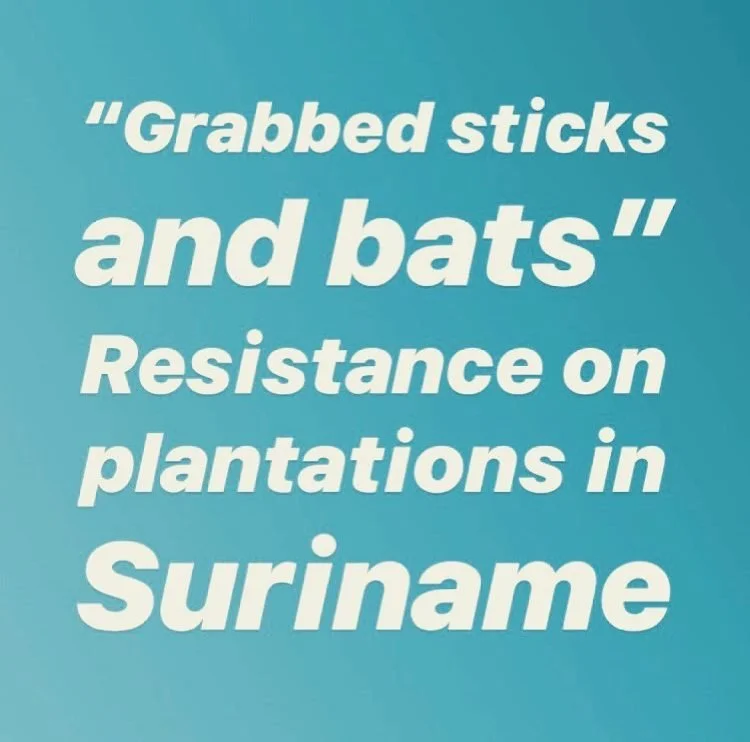Resistance in Suriname
“The events of the 15th of July 1879 on the Alliance plantation were reflected on most explicitly. Many of the [indentured labourers] working on this estate had been ‘displeased and unwilling to work’, according to the report they had simulated illness and said their ‘tasks were too heavy’. The estate manager had brought 58 of these workers before court, who were sentenced with eight to ten days of imprisonment and forced labor. After the sentence was determined a dispute between the [labourers] and the authorities arose, after the [labourers] boarded a ship without permission. The reflections of the indentured laborers on the dispute that arose were not given in the reports, but a part of the reasoning behind the unwillingness to work was stated.
This becomes even clearer when the colonial report on 1884 is taken into consideration. This report holds the most detailed description of resistance. In September 1884 there were violent confrontations between [labourers] and their overseers on plantations, Zoelen and Zorg en Hoop. At both estates military forces were ordered to restore order. A detailed description of the events was given by the agent general in the supplement. At both plantations the workers had complaints about the large amount of work they had to do and the low pay they received. According to the colonial report three [labourers] at Zoelen received a pass to visit the district manager, which they refused, saying this ‘did not have anything to do with the district manager.’ At Zorg en Hoop, the report stated, the district manager was ordered because [labourers] had allegedly attacked an overseer. After the arrival of the district manager, however, the worker ‘called him names and took on a more and more threatening attitude.'
This hostile attitude towards the district manager at both Zoelen and Zorg en Hoop was included by the agent general to underline the unreasonable and unacceptable behavior of the [labourers].
This served as part of the explanation why military force was ordered. However, reading these statements against the grain can lead to different conclusions. The district manager was both a representative of the plantocracy and of the colonial government, so the [indentured labourers] knew the chances of him siding with their employer were extensive. Also the legal system had been working in favor of the planters from the beginning of immigration and many of the [labourers] knew filing a complaint was pointless.
It is likely [labourers] wanted business to be settled without the district manager present, because there was a risk he would decide to prosecute them. Both at Zoelen and Zorg en Hoop the situation escalated. The [labourers] did not accept the proposals made by the district manager and the overseers. According to the report, violence was initiated by the [labourers], who grabbed sticks and bats, and started to attack the overseers. At Zorg en Hoop seven [labourers] were killed as a result of military interference. The initiation of violence by the South Asians and the brutality of their acts were used to justify the casualties. However, when read against the grain it has to be said, the portrayal of [labourers] does grant them agency.
The utterances of ‘“awa” (come on) and “bahut mara” (hit)’ that were included in the report underline the purposeful manner in which the [labourers] acted. Through the act of resistance the [indentured labourers] in the report were made then into speaking persons, instead of silenced ones.”
-South Asian Men and Women in the Suriname Colonial Reports between 1873-1917, Margriet Fokken
